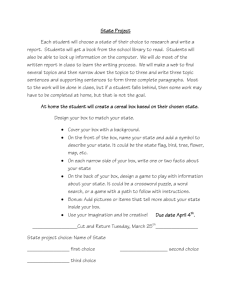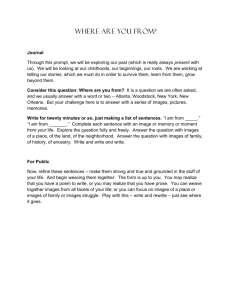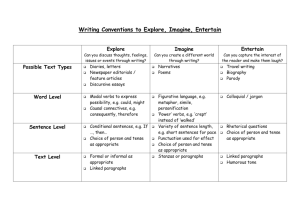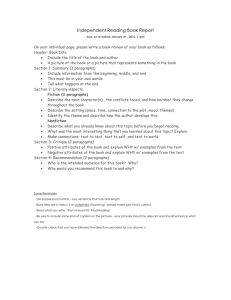ACCESS Lesson Plan Pacing Guide
advertisement
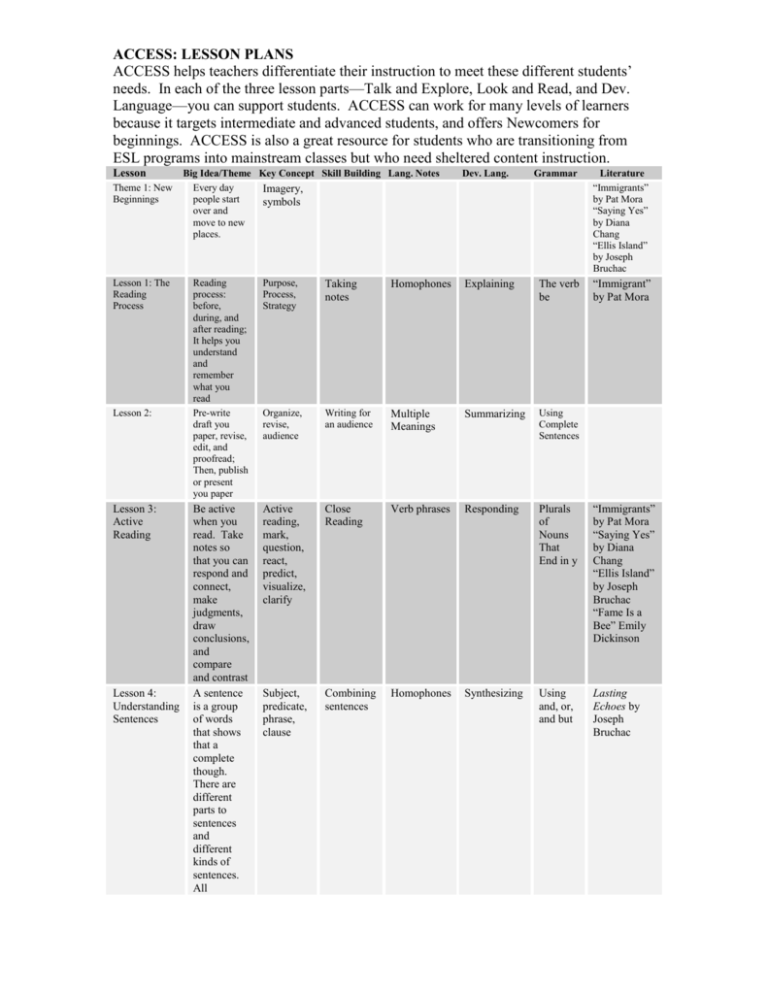
ACCESS: LESSON PLANS ACCESS helps teachers differentiate their instruction to meet these different students’ needs. In each of the three lesson parts—Talk and Explore, Look and Read, and Dev. Language—you can support students. ACCESS can work for many levels of learners because it targets intermediate and advanced students, and offers Newcomers for beginnings. ACCESS is also a great resource for students who are transitioning from ESL programs into mainstream classes but who need sheltered content instruction. Lesson Theme 1: New Beginnings Lesson 1: The Reading Process Lesson 2: Lesson 3: Active Reading Lesson 4: Understanding Sentences Big Idea/Theme Key Concept Skill Building Lang. Notes Every day Imagery, people start symbols over and move to new places. Dev. Lang. Grammar Literature “Immigrants” by Pat Mora “Saying Yes” by Diana Chang “Ellis Island” by Joseph Bruchac “Immigrant” by Pat Mora Reading process: before, during, and after reading; It helps you understand and remember what you read Pre-write draft you paper, revise, edit, and proofread; Then, publish or present you paper Purpose, Process, Strategy Taking notes Homophones Explaining The verb be Organize, revise, audience Writing for an audience Multiple Meanings Summarizing Using Complete Sentences Be active when you read. Take notes so that you can respond and connect, make judgments, draw conclusions, and compare and contrast A sentence is a group of words that shows that a complete though. There are different parts to sentences and different kinds of sentences. All Active reading, mark, question, react, predict, visualize, clarify Close Reading Verb phrases Responding Plurals of Nouns That End in y “Immigrants” by Pat Mora “Saying Yes” by Diana Chang “Ellis Island” by Joseph Bruchac “Fame Is a Bee” Emily Dickinson Subject, predicate, phrase, clause Combining sentences Homophones Synthesizing Using and, or, and but Lasting Echoes by Joseph Bruchac ACCESS: LESSON PLANS ACCESS helps teachers differentiate their instruction to meet these different students’ needs. In each of the three lesson parts—Talk and Explore, Look and Read, and Dev. Language—you can support students. ACCESS can work for many levels of learners because it targets intermediate and advanced students, and offers Newcomers for beginnings. ACCESS is also a great resource for students who are transitioning from ESL programs into mainstream classes but who need sheltered content instruction. Theme 2: People Like Us Lesson 5: Reading Paragraphs Lesson 6: Ways of Organizing Paragraphs sentences begin with a capital letter and end with punctuation People everywhere want to fit in. They want to feel like they belong and have friends. When they meet new people, they want to be accepted and to be treated well. To find the main idea of a paragraph, first look for the topic or subject. Then look for what the writer says about that topic. Sometimes the main idea will be stated. Most of the time you’ll need to infer the main idea. Paragraphs can be organized in different ways. If you learn how the ideas and details are organized, it will help you understand Tone and Mood, Style The House on Mango Street by Sandra Cisneros Paragraph, topic, subject, main idea Drawing Conclusion Verb Phrases Evaluating Using a and an The House on Mango Street by Sandra Cisneros Organize, arrange, order Visualizing Signal Words: Cause-Effect Identifying Identifying When to Use am, is and are “Amigo Brothers” by Piri Thomas The House on Mango Street by Sandra Cisneros ACCESS: LESSON PLANS ACCESS helps teachers differentiate their instruction to meet these different students’ needs. In each of the three lesson parts—Talk and Explore, Look and Read, and Dev. Language—you can support students. ACCESS can work for many levels of learners because it targets intermediate and advanced students, and offers Newcomers for beginnings. ACCESS is also a great resource for students who are transitioning from ESL programs into mainstream classes but who need sheltered content instruction. Lesson 7: Descriptive Paragraphs the paragraphs. Here are five common ways of organizing paragraphs. A descriptive paragraph describes someone or something. It has a main idea, details, and adjectives. A descriptive paragraph also creates images that help readers see, hear, feel, smell or taste something.
